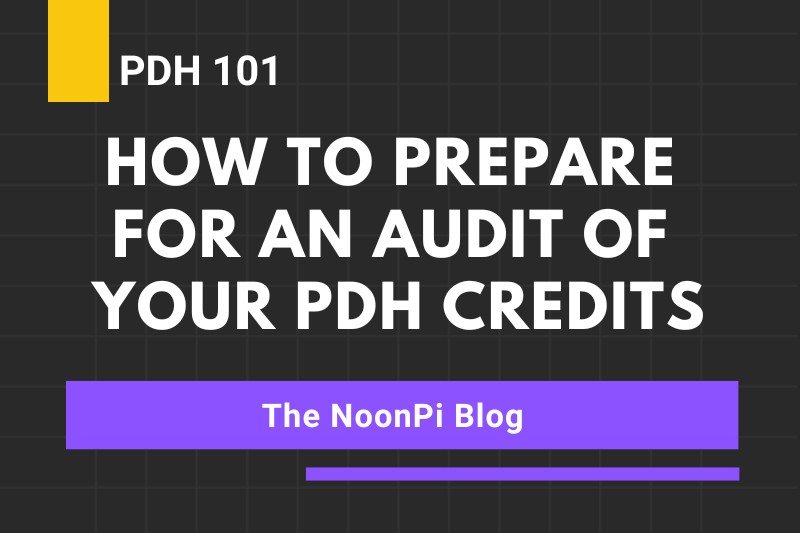Maintaining a professional engineering license requires continuous learning and growth, demonstrated through the acquisition of Professional Development Hours (PDH). A crucial part of this process is occasionally undergoing audits by your state licensing board. An audit can be a daunting prospect, but with proper preparation and organization, it doesn’t need to be a stressful ordeal. In this article, we’ll outline key steps to help you confidently prepare for a PDH credit audit.
- Understand the Requirements
Each state licensing board has its own set of requirements for PDH credits. Familiarize yourself with your specific state’s laws and rules. Know the number of PDH credits required in each renewal period, the types of activities that qualify, and how the credits are calculated. Understanding these rules will not only aid in preparing for an audit but also ensure that you are on track with your PDH completion plan. - Maintain Accurate Records:
One of the biggest advantages of online learning is the flexibility it offers. Engineers can learn at their own pace, at a time that suits them best, without disrupting their work schedules. Whether it’s a live webinar or a pre-recorded course, learners have the freedom to access the content when and where they want. - Organize Your Documents
Don’t wait until an audit notice arrives to start organizing your documents. Keep a dedicated file or digital folder for all your PDH-related materials. This should include both your log of activities and the supporting documentation for each activity. Organize them chronologically or by category based on your preference. The key is to be able to easily locate any document requested during the audit. - Validate Your Courses
Not all courses or activities are accepted for PDH credits by every state board. Be sure to validate that the courses you’ve taken are accepted by your state licensing board. If you’re unsure, don’t hesitate to contact the course provider or your state board for clarification. This step will save you from potential rejections during the audit. - Prepare for Possible Rejections
Despite your best efforts, it’s possible that some activities may not be accepted during the audit. Consider earning more than the minimum required PDH credits during each renewal period. This buffer can come in handy if some of your hours are rejected during the audit. And most states will allow some of those excess PDH credits to be carried over into the next renewal cycle. - Respond Promptly to the Audit Notice
When you receive an audit notice, respond promptly. Review the requested information and compile the necessary documents. If there are any discrepancies or if you need additional time, communicate this to the board as soon as possible. Prompt responses and a willingness to cooperate will facilitate a smoother audit process. - Seek Guidance if Needed
If you’re uncertain about the audit process or your state’s requirements, don’t hesitate to seek guidance. Contact your state board, consult with a professional organization, or speak with colleagues who have undergone an audit. Their insights can be invaluable in navigating the process.
In Conclusion
An audit of your PDH credits need not be a daunting experience. With a proactive approach, accurate record-keeping, and thorough organization, you can navigate an audit confidently. Remember, the purpose of PDH credits and the audit process is to ensure you continue to grow and learn as a professional engineer, thereby protecting public health, safety, and welfare. Embrace this opportunity to showcase your commitment to professional development and continuous learning in your engineering career.









Leave A Comment